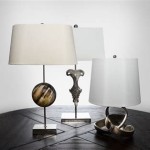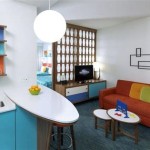NCIDQ: A Gateway to Professional Interior Design Recognition
The National Council for Interior Design Qualification (NCIDQ) stands as a pivotal organization in the realm of interior design, offering a comprehensive path towards professional recognition and licensure. Its mission is to elevate the standards of the profession by establishing and enforcing a rigorous examination process that ensures competency and ethical practice. For aspiring and established interior designers alike, passing the NCIDQ exam serves as a significant milestone, signifying expertise and adherence to industry best practices.
The Significance of NCIDQ Certification
Earning NCIDQ certification offers a multifaceted array of benefits for interior designers. It serves as a tangible demonstration of professional competence, bolstering credibility and fostering trust among clients. By demonstrating commitment to ongoing professional development, certified designers gain a competitive edge in the marketplace, especially in jurisdictions where licensure is mandatory. Moreover, NCIDQ certification opens doors to opportunities for career advancement, increased earning potential, and enhanced professional networking within the design community.
The NCIDQ Examination Process
The NCIDQ exam is designed to assess the knowledge, skills, and abilities crucial for successful interior design practice. It comprises three separate examinations: the Interior Design Fundamentals Exam (IDFX), the Professional Practice Exam (PP), and the Interior Design Project Exam (IDPX). Each exam covers a distinct set of subject matter, meticulously crafted to reflect the multifaceted nature of the profession.
The IDFX acts as the foundational exam, evaluating a candidate's understanding of fundamental principles and concepts in interior design, ranging from building codes and regulations to design history and theory. The PP delves into the professional aspects of practice, encompassing business acumen, legal and ethical considerations, and communication skills essential for successful client relationships.
The IDPX, the culmination of the examination process, challenges candidates to apply their knowledge and skills in a comprehensive design project scenario. Applicants must demonstrate their ability to develop a design solution that adheres to project requirements, addresses functional needs, and incorporates aesthetic considerations. The rigorous nature of the IDPX requires a deep understanding of the design process, from initial concept to final execution.
Preparing for the NCIDQ Exam
Preparing for the NCIDQ exam necessitates a structured and comprehensive approach. Candidates benefit from accessing a wealth of resources provided by NCIDQ, including study guides, practice exams, and online learning modules. Engaging in focused study sessions, attending preparation workshops or courses, and seeking mentorship from experienced designers can significantly enhance exam readiness.
The importance of staying current with industry trends, codes, and practices cannot be overstated. Continuous learning is a cornerstone of the design profession, and preparation for the NCIDQ exam serves as an excellent opportunity to reinforce and expand knowledge in key areas.
The NCIDQ's Role in Setting Standards
Beyond the examination process, the NCIDQ plays a crucial role in setting and upholding the standards of the interior design profession. It advocates for licensure and regulation, working with state and local governments to ensure legal recognition and protection for the profession. Moreover, NCIDQ actively participates in professional development initiatives, providing educational resources and networking opportunities to promote best practices and encourage continuous learning among its members.

Ncidq Certification Printed Certificate Sg23 Design

Not Just Another Acronym Ncidq And What It Means For You Speas Interior Design

Ncidq 101 Everything You Need To Know About The Creative Confidante

Resources For The Ncidq Exam Ppi A Kaplan Company

Idpx Ncidq National Council For Interior Design Qualification

Ncidq Exam And Certification Everything You Need To Know Foyr

Ppi Ncidq Interior Design Reference Manual Seventh Edition Paperback Com

Ncidq Exam And Certification Everything You Need To Know Foyr

Ncidq 101 Everything You Need To Know About The Creative Confidante
Everything You Need To Know About The 2024 Ncidq Exam Sarah Jacquelyn Interiors








